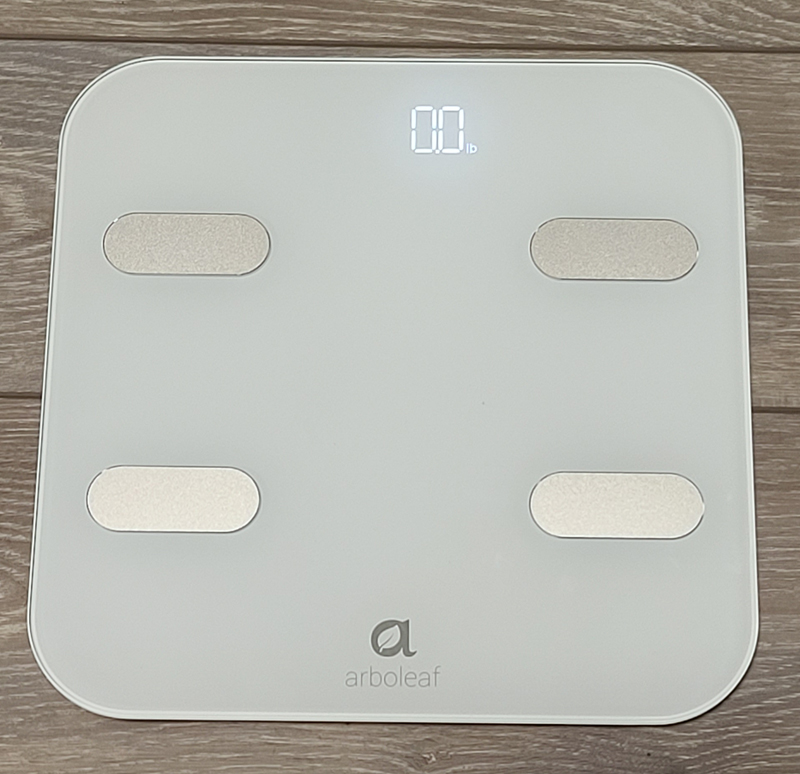
REVIEW – Of course, we’ve all heard of COVID-19 by now. To be clear, the “19” on the end is not supposed to be the number of pounds we each have gained by sitting in quarantine, eating Cheetos and Oreos. If that has happened to you, you need a tool to track that tonnage and perhaps motivate you to shed it as we begin to open up again.
Arboleaf has released the CS20A smart scale as a follow-up to its CS20N smart scale. Let’s take a look at what’s changed and whether it’s worth the wait to track your weight.
What is it?
The CS20A is an evolution of the CS20N smart scale that I reviewed in May 2019. The digital scale records your weight as well as the following body composition factors:
- Body fat %
- Body type
- Visceral fat (fat stored in the abdominal area)
- Body water %
- Muscle mass
- Bone mass
- BMR (basal metabolic rate – essentially, how much energy you burn when resting)
- BMI (body mass index)
- Metabolic age
That’s the same list as the CS20N. In addition, the CS20A also measures:
- Fat-free Body Weight
- Subcutaneous Fat
- Skeletal Muscle
- Protein
The biggest difference is that the CS20A adds in WiFi connectivity. I will talk about that in the Performance section below.
What’s in the box?
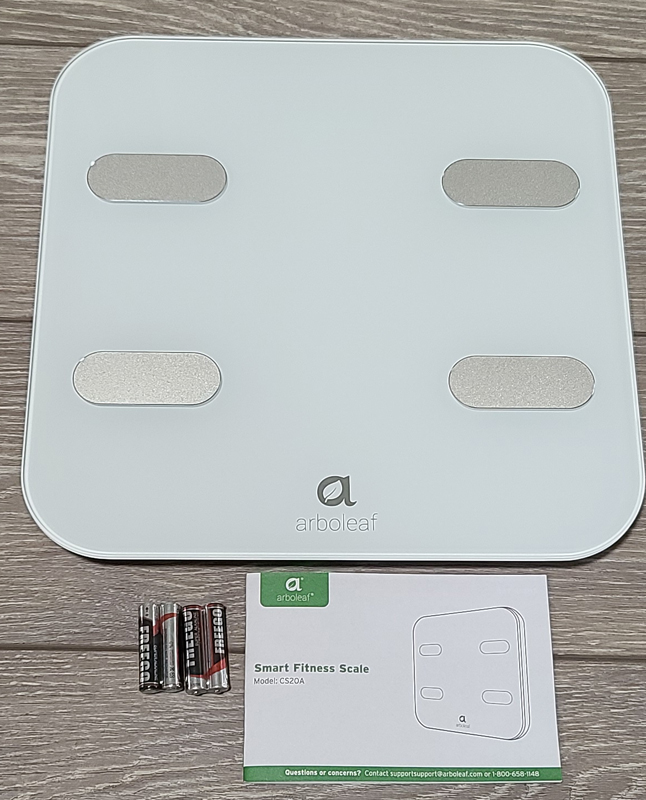
- Arboleaf CS20A scale
- Four AAA batteries
- User manual
Hardware specs
- Dimensions: 11.8″ x 11.8″ x 1″
- Weight: 2.2 lbs
- Power: Four AAA batteries
- Measurement range: 0.4 – 396 lbs
- Measurement accuracy: +/- 0.2 lbs
- Connectivity: Bluetooth 4.0 and 2.4 GHz WiFI
Design and features
This scale is very similar to the last one. The new CS20A is on the left, the older CS20N on the right.
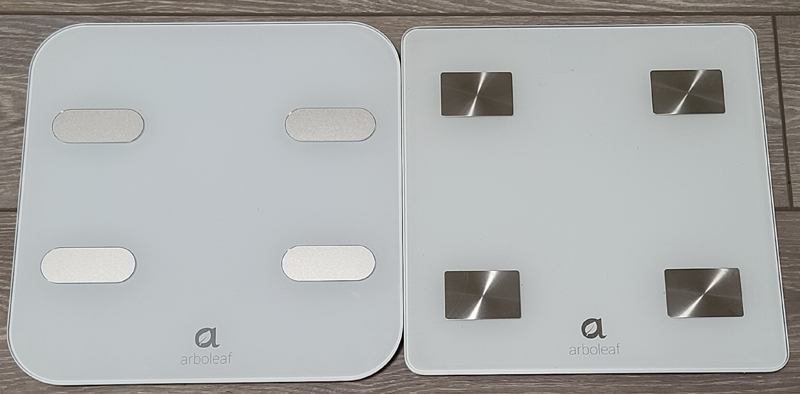
They are essentially identical in size. The new design rounds off the corners a bit. It changes the measurement pads from rectangular to oval and changes the display from blue LEDs to white LEDs. The silver-toned measurement pad finish and white glass surface remain.
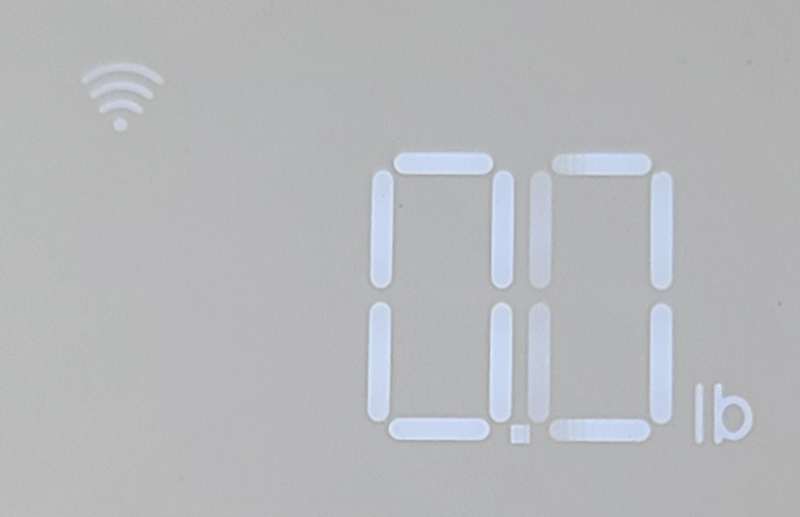
That WiFi symbol in the upper left is the main feature change.
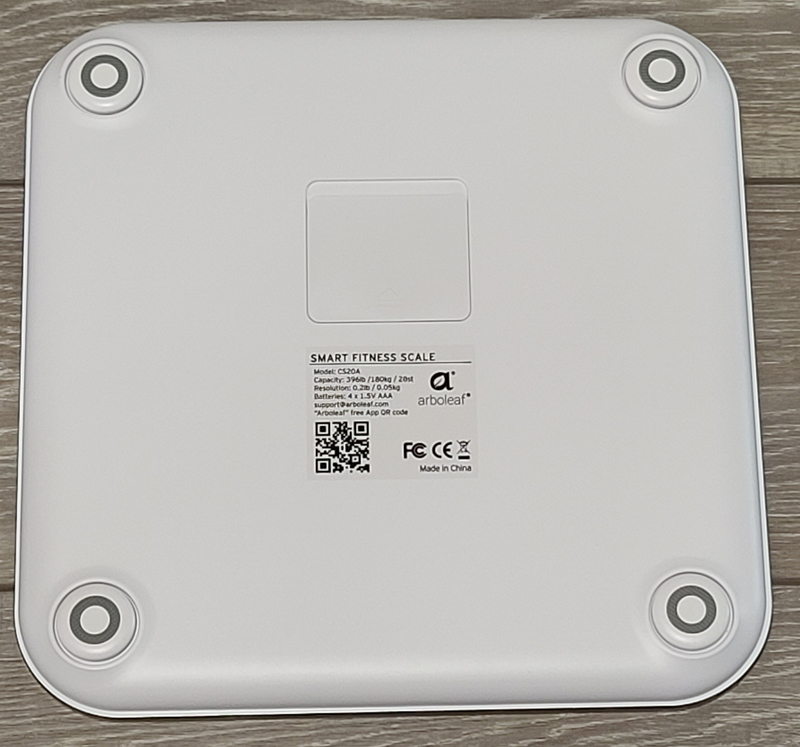
Underneath, we find the non-slip feet, information label, and battery compartment.
Setup
Setup starts by inserting the four included AAA batteries into the battery compartment.
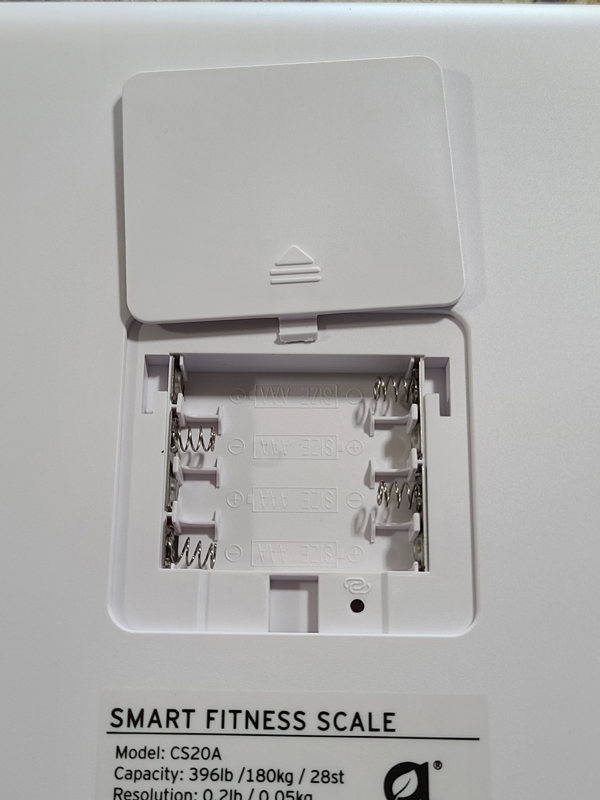
The scale can be used as a standalone scale. The display will show you all the body composition measurements, one by one. The disadvantage of using the scale this way is that you lose any ability to track progress unless you are going to record everything manually.
Assuming that you want to take advantage of the additional features, download the Android or IOS app, set up an account, and let the app walk you through Bluetooth pairing and WiFi connections. Note that this will not work on a 5GHz WiFi network and requires a 2.4 GHz network connection.
In the setup, you enter information about yourself, including height, gender, and birthday. The other parameter is “Athlete Mode”. That is essentially reserved for elite athletes as their body composition measures differently from the rest of us. As you will see with my screenshots, that mode was not required for me.
Performance
The old scale would display a “CAL” indicator after you briefly step on and off the scale, indicating that it was calibrating. This scale also suggests an occasional calibration but doesn’t display a “CAL” indicator. To take a reading, you step on briefly and off, wait for the display to stabilize on “0.0” and step on to the pads.
Like the older scale, it uses electricity to measure the various body factors, you should not use this scale, or any scale like this, if you have a pacemaker, artificial lung, ECG or any other internal medical device.
Once you have everything all hooked up to Bluetooth and WiFi, it’s time to weigh. You have two choices on how to proceed. Regardless of what you choose, the process is:
- Step on and off
- Wait for the 0.0
- Step on the pads
- Wait for the weight to flash – this completes the weight portion
- Wait for four indicators to flash across twice just below the weight – this indicates that the body composition parameters are being recorded
- Once the weight flashes again, you’re done and can step off
- The body composition parameters will then display, one by one, at the top of the scale
Now, let’s look at the two ways to record the data.
First, like the Bluetooth-only CS20N, open the app and use the scale. The Bluetooth indicator will display on the scale and all the data will instantly display on the phone.
Second, if you do not open the phone app, when you step on/off to calibrate, the WiFi indicator will turn on. Then, use the scale. Once the measurement is complete, a flashing series of indicators will display like a track around the weight display area. This indicates that the measurements are being uploaded to the Arboleaf cloud. Once it finishes, it displays “Open App”. You can then open the app and the app pulls everything down from the cloud.

As before, you can setup multiple users. You’ll note that I’m not an idiot and blurred out my lovely wife’s weight.
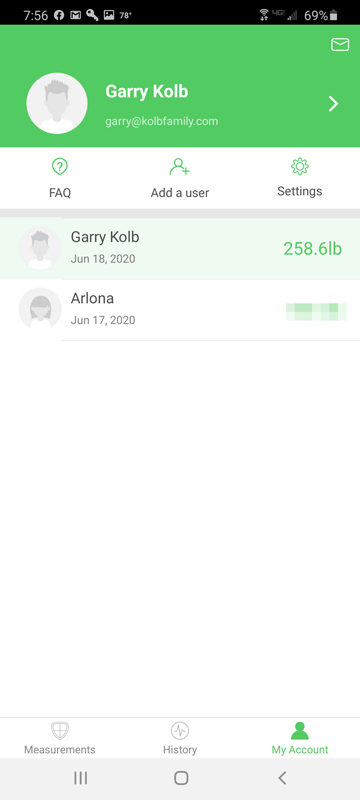
This is where the cool WiFi features come in. As long as there is a difference in weight that the app can determine, all WiFi measurements are automatically assigned to the correct user. I weighed myself at night, then again in the morning. My wife then weighed herself. After all those measurements, we each opened the app on our phone. The measurements were correctly attributed to each of us. It will occasionally report that an unknown measurement has been captured and ask where it should be attributed. This typically happens in the event of a large change in weight between measurements.
The other nice features of the app remain. If you start a new weight loss program and want to reset where you are tracking the changes, you can choose any of the existing measurements as your new starting point.
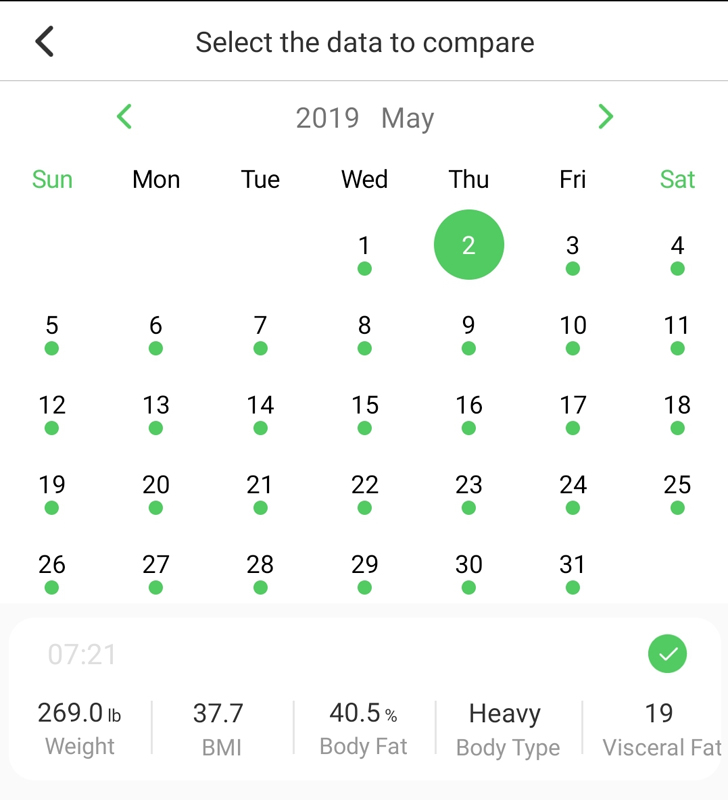
You can track all parameters over time in the history screen.
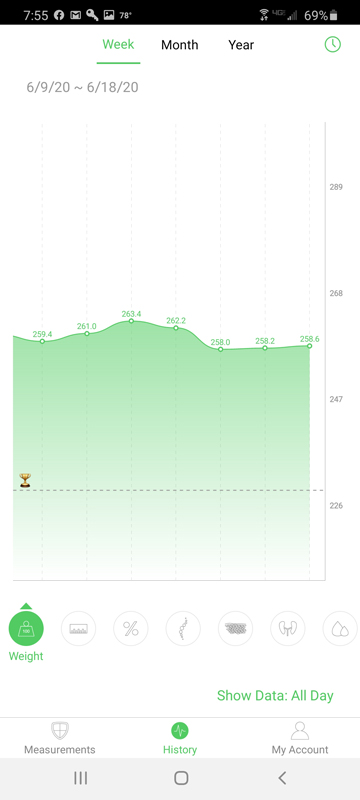
All other app parameters remain where you can set goals, app colors, weight units, measurement reminders, and such. The app can also still transfer measurements over the Google Fit and Fitbit if you connect the accounts.
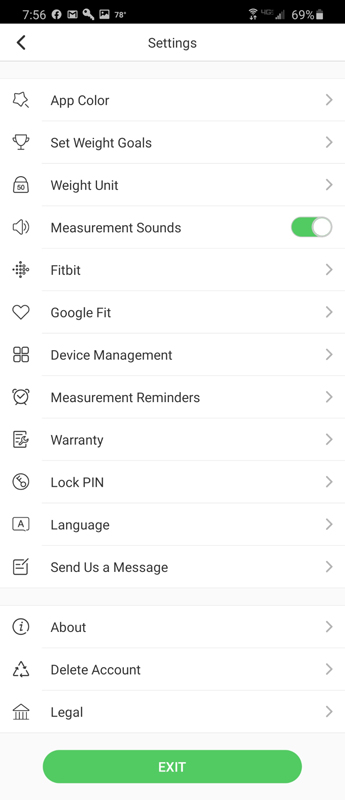
I did have some connectivity issues. WiFi measurements would regularly fail to upload to the cloud. A quick call you Arboleaf’s friendly tech support solved that. I had not removed my connection to the older CS20N scale in the app. It turns out that having both scales defined as being connected to the app was a problem. That didn’t see to make sense to me since you don’t open the app to use WiFi, but sure enough, as soon as I removed the CS20N from the app, every single measurement from that point on uploaded properly.
What I like
- The updated design looks just as nice as the older version
- Great set of measurement data and history
- Easy to use
What I’d change
- If you want to watch all the body composition parameters display on the scale, it takes a while as each one displays for a couple of seconds, and there are a ton of parameters – I’d speed that up a little
Final thoughts
The CS20A is a creat update to the CS20N. Both scales are current products and both are terrific scales. For me, I like to open the app and record my weight. It’s quick and has become a habit. But, there have been times when I was going to record my weight and I wasn’t carrying my phone, so I skipped it. Now, that isn’t an issue as the scale will upload it and I’ll see it the next time I open the app.
I don’t think you can go wrong with either version of the scale, but for me, adding the WiFi increases the usability and value of the scale. You have nothing to lose, except some weight.
Price: $45.99
Where to buy: Amazon
Source: The sample of this product was provided by Arboleaf.



Gadgeteer Comment Policy - Please read before commenting
Hi,
is it possible to change it from lbs to kg in settings?
Thanks Yves
Yves:
Absolutely. The app lets you set the units to pounds, kilos, or stones.